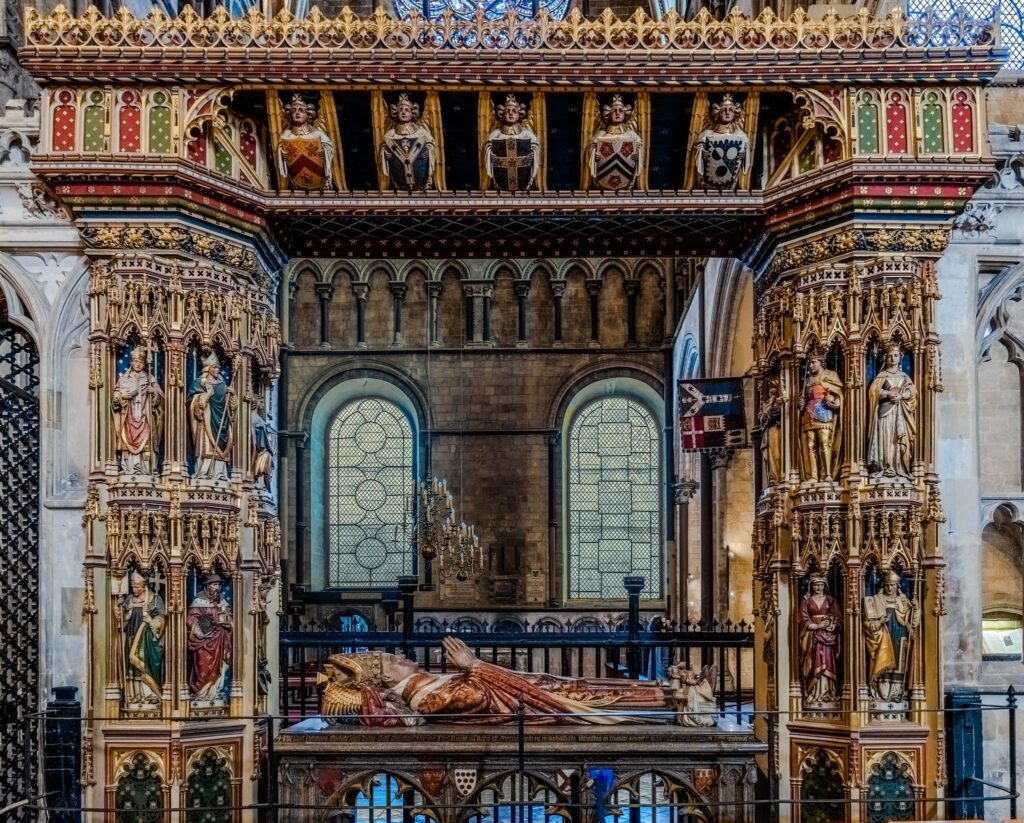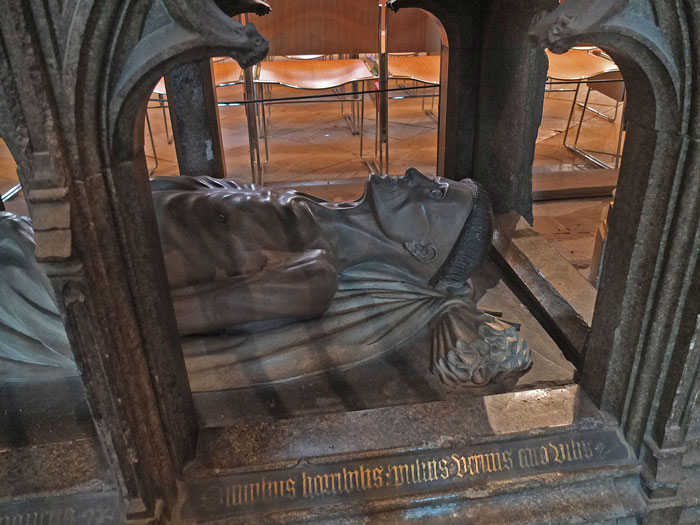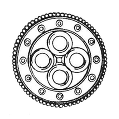(1364-1443), Archbishop of Canterbury (1414-1443) – for more click here
Thought to be designed by Thomas Mapilton with sculpture work by John Massingham III.
Chichele had his tomb installed by 1427, the suggestion being that having been erected during his lifetime it became an object for personal contemplation. The tomb is a colourful double-decker with an effigy on each tier. It is of a variety known as a cadaver or transi tomb and designed to remind the viewer of the miracle of the resurrection and the transitory nature of the mortal body. It is generally regarded as the oldest tomb in the country of its type. Chichele had an active career including many journeys to continental Europe, from where his choice of tomb may have arisen. The upper life-like effigy shows the archbishop in full ecclesiastical dress, with hands clasped in prayer. Angels are located at his head while two monks pray at his feet. Viewed from the north the side of the tomb is pierced by three gothic arches revealing in the lower register an emaciated cadaver with closed eyes. The two effigies are described in various texts as being made of stone; and it has been suggested that the cadaver is made of alabaster. Unfortunately, both figures are heavily painted and no stone appears to be visible for a visual identification to take place.
The upper effigy rests on a table of Purbeck Marble with the tomb chest below constructed from several pieces of finely carved Purbeck Marble. The brass-work, or latten (an alloy of copper, zinc and tin) for the inscription plate was probably originally executed by a London workshop. The Latin inscription translates as: “I was a pauper born, then to primate raised. Now I am cut down and served up for worms. Behold my grave. Whoever who may be who will pass by, I ask for your remembrance.”
Chichele founded All Souls College, Oxford in 1438. The College Fellows are responsible for the tomb’s upkeep having undertaken to carry out inspections and maintenance every 50 years. Following considerable damage to the tomb, during period of the seventeenth-century Commonwealth, much repair work was carried out. Several restorations have been funded by the college accounting for the tomb’s present colourful and complete appearance, although no inspection by the Fellows was carried out, when due, in 1997. Some restoration work to the cadaver has been carried out in modelled wax to imitate the surrounding stone. The tester and supporting ornate piers are all restored and of wood. The figurines were first replaced in 1663- 64 and again in 1897, when wooden figures were substituted.

View from the North – image courtesy of Philip Smithies

